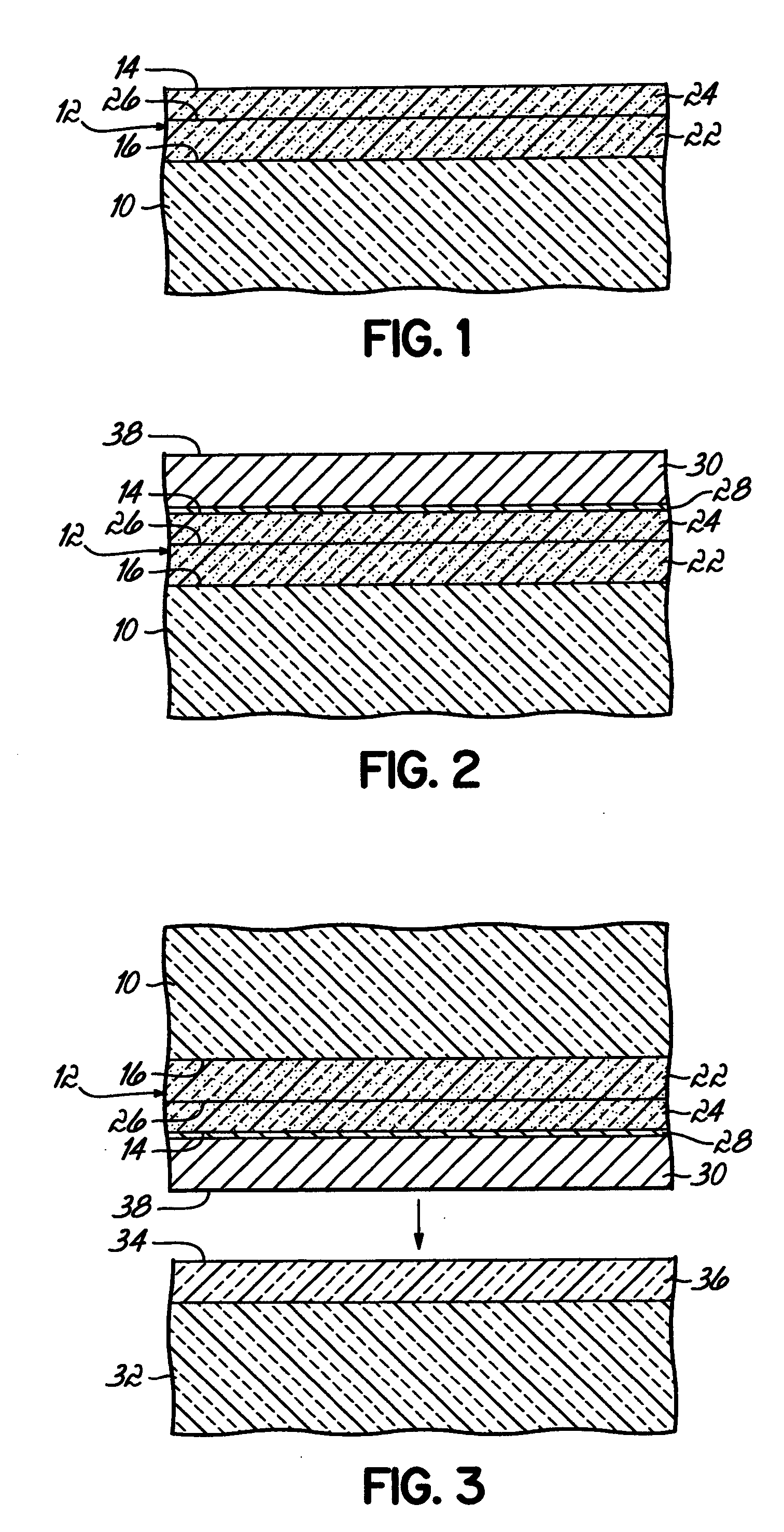Methods for forming germanium-on-insulator semiconductor structures using a porous layer and semiconductor structures formed by these methods
a technology of germanium-on-insulator and semiconductor structure, which is applied in the field of method of forming germanium-on-insulator semiconductor structure and semiconductor structure formed by these methods, can solve the problems of defective active layer for device formation, limited process throughput, and significant density of threading dislocations, so as to minimize the nucleation of threading dislocations
- Summary
- Abstract
- Description
- Claims
- Application Information
AI Technical Summary
Benefits of technology
Problems solved by technology
Method used
Image
Examples
Embodiment Construction
[0017] The present invention provides a semiconductor structure that may be used as a germanium-on-insulator (GOI) substrate for device fabrication. The GOI substrate of the present invention may be particularly advantageous for forming complementary metal oxide semiconductor field effect transistors (CMOSFETs) as a substitute for, or complement to, conventional silicon-on-insulator (SOI) substrates. Germanium (Ge) advantageously has a significantly higher carrier mobility than silicon (Si) for both electrons and holes, as well as lower contact resistance and lower dopant activation temperatures that facilitate the formation of shallow junctions. The present invention will now be described in greater detail by referring to the drawings that accompany the present application.
[0018] With reference to FIG. 1, a porous layer 12 is formed on a first substrate 10. Substrate 10 may be a bulk silicon substrate, in which instance the porous layer 12 represents a depth over which the constit...
PUM
 Login to View More
Login to View More Abstract
Description
Claims
Application Information
 Login to View More
Login to View More - Generate Ideas
- Intellectual Property
- Life Sciences
- Materials
- Tech Scout
- Unparalleled Data Quality
- Higher Quality Content
- 60% Fewer Hallucinations
Browse by: Latest US Patents, China's latest patents, Technical Efficacy Thesaurus, Application Domain, Technology Topic, Popular Technical Reports.
© 2025 PatSnap. All rights reserved.Legal|Privacy policy|Modern Slavery Act Transparency Statement|Sitemap|About US| Contact US: help@patsnap.com



